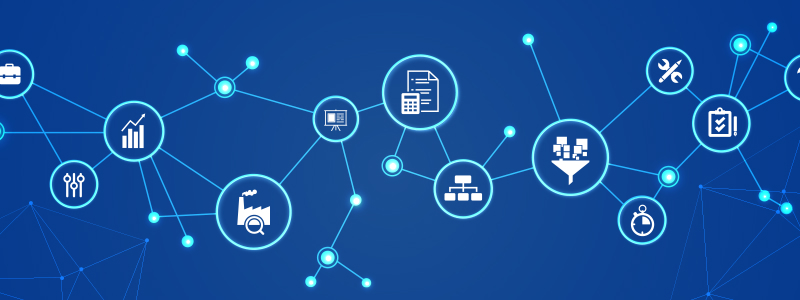
Information Governance vs. Data Governance: A Comparative Analysis
Every digital interaction generates data. This data can provide invaluable insights and drive effective decision-making when managed effectively. However, according to a survey, up to 68% of data within an enterprise remains unused, representing an untapped resource for driving business growth. One way of unlocking this potential lies in two critical concepts: data governance and information governance.
Data governance focuses on the technical and operational aspects of managing data, while information governance looks at the wider policies, procedures, and strategies guiding data usage. They are different, yet they complement each other, providing a holistic approach to managing data.
Understanding Data Governance
Data governance is a set of processes, policies, standards, and metrics that control and manage the use of data within organizations. Its primary purpose is to ensure organizational data assets’ quality, integrity, security, and effective use.
The key objectives of data governance include:
- Enhancing Clear Ownership: Assigning roles to ensure accountability and effective management of data assets.
- Ensuring Data Quality: Implementing measures to improve data accuracy, consistency, and reliability.
- Implementing Lifecycle Management: Establishing efficient data creation, storage, and disposal processes.
- Protecting Access Controls: Implementing robust mechanisms to safeguard sensitive data from unauthorized access or modification.
Understanding Information Governance
Information governance is a broader term that includes data governance within its framework. It refers to the strategies, policies, and procedures that manage and utilize all information within an organization. It’s a strategic approach that positions information as a crucial asset, enhancing decision-making and organizational growth.
Information governance ensures that all available information is used effectively, aiding in compliance efforts and achieving strategic goals. The main objectives of information governance include:
- Ensuring Regulatory Compliance: Aligning practices with laws and regulations to mitigate risks and maintain trust.
- Fostering Knowledge Sharing: Promoting collaboration to leverage collective expertise for innovation and improvement.
- Implementing Security Measures: Enforcing encryption and monitoring to protect sensitive information.
- Streamlining Record Keeping: Improving processes for efficient organization, retrieval, and retention of records.
Information Governance vs. Data Governance: Key Differences
While data and information governance play integral roles in managing an organization’s data and information assets, they differ in scope and focus.
| Aspect | Data Governance | Information Governance |
| Focus | Management of all kinds of data assets | Management of all forms of information assets |
| Objectives | Ensuring the accuracy, consistency, security, and compliance of data assets | Understanding the business value and compliance needs of the information assets |
| Activities | Data quality management, metadata management, data privacy and security | Document management, records management, compliance |
| Scope | Technical aspects of data management within systems | Broader perspective, including information related to documents, knowledge, and intellectual property |
| Stakeholders | Data stewards, IT departments | Executives, Legal teams, IT departments, Information security teams, etc. |
| To summarize, while data governance focuses on managing data assets, information governance widens the lens to ensure that all information assets are effectively and compliantly utilized, aligning with the overall organizational objectives. |
Real-World Scenarios of Data Governance and Information Governance in Action
Learning how data governance and information governance approaches are applied across industries is important to understand their practical relevance. Here are some real-world scenarios where each approach is effectively implemented:
Data Governance
E-commerce Quality Assurance: In e-commerce, data governance ensures product quality consistency. Platforms can standardize product information and monitor data quality, which enhances customer trust, minimizes returns, and drives competitiveness.
Healthcare Data Security: Data governance is vital to protect patient information. By implementing strict access controls and encryption measures, healthcare organizations safeguard sensitive data, ensuring patient privacy and confidentiality.
Information Governance
Financial Compliance Management: Financial institutions maintain regulatory compliance through information governance. They can mitigate compliance risks and maintain stakeholder trust by identifying and organizing data subject to regulations, such as Dodd-Frank or Basel III, and enforcing the corresponding policies.
Education Knowledge Management: Educational institutions optimize knowledge sharing with information governance. By organizing academic resources and implementing access controls, institutions support teaching and learning goals, fostering innovation and collaboration.
How do Data Governance and Information Governance Work Together?
Data governance and information governance are complementary frameworks that effectively manage organizational data and information assets. Integrating data governance and information governance practices helps address the technical and business aspects of data and information management.
Data governance ensures data integrity, accuracy, and security within organizational systems. In contrast, information governance ensures that all information assets, including documents, records, and intellectual property, are managed effectively throughout their lifecycle.
Benefits of Implementing Data and Information Governance Together
Combining data governance and information governance practices enables organizations to adopt a comprehensive approach to governance, covering all aspects of managing data and information. This holistic approach enables organizations to:
- Maximize Data and Information Value: Organizations can derive maximum value from their data and information resources by effectively managing their data and information assets. Data governance ensures accurate, consistent, and secure data, while information governance ensures that information assets are utilized to maximize their value to the organization.
- Mitigate Risks and Ensure Compliance: Integrating data governance and information governance practices helps organizations mitigate risks associated with data breaches, privacy violations, and non-compliance with regulations. Data governance ensures compliance with data-related regulations and standards. However, Information governance ensures compliance with broader information management requirements, such as GDPR and HIPAA, enhancing regulatory compliance and risk management efforts.
- Enhance Decision-Making and Innovation: Integrated governance practices provide a comprehensive framework for managing data and information assets, which can support informed decision-making and drive innovation. Data governance ensures decision-makers access accurate, reliable, and secure data. Information governance ensures that relevant information assets are accessible, well-managed, and compliant, facilitating collaboration and innovation.
Best Practices for Implementing Data and Information Governance Together
Given the benefits of combining these two approaches, How can users effectively implement them? Integrating data and information governance practices requires a strategic approach and adherence to best practices.
Here are seven best practices to achieve this:
- Establish Clear Policies and Frameworks: Define clear data governance and information governance policies and frameworks that align with organizational objectives and regulatory requirements. These policies should outline roles, responsibilities, and processes for managing data and information assets across the organization.
- Engage Stakeholders Across Departments: Collaboration and buy-in from stakeholders across departments are crucial for successfully implementing governance practices. Engage key stakeholders, including business units, IT teams, legal, compliance, and risk management departments, to ensure that governance policies address the needs and priorities of all stakeholders.
- Define Data and Information Assets: Identify and classify data and information assets based on their sensitivity, criticality, and value to the organization. This step involves creating a data catalog as a centralized inventory system for easy data discovery. The catalog categorizes assets by type, ownership, and usage, offering a comprehensive view of available data.
- Implement Data and Information Lifecycle Management: Develop and implement processes for managing the lifecycle of data and information assets, from creation and acquisition to retention and disposal. This step includes establishing data retention policies, archiving procedures, and disposal mechanisms to ensure compliance with regulatory requirements and mitigate data and information exposure risks.
- Ensure Data Quality and Integrity: Implement data quality management practices to maintain data assets’ accuracy, completeness, and consistency. These practices involve establishing data quality standards, conducting data profiling and cleansing activities, and monitoring data quality metrics regularly to identify and address issues proactively.
- Provide Ongoing Training and Awareness: Educate employees about the importance of data governance and information governance practices through training programs, workshops, and communication campaigns. Foster a culture of data stewardship and information security awareness to encourage adherence to governance policies and promote responsible data and information management practices.
- Continuous Monitoring and Improvement: Regularly monitor and assess the effectiveness of governance practices through audits, reviews, and performance metrics. This process involves identifying areas for improvement based on stakeholder feedback and changing organizational needs and regulations. Additionally, prioritize adaptability by continually refining governance frameworks and methods to address the evolving demands of data and information management.
Investing in technology solutions, such as data management solutions, data governance platforms, document management systems, and metadata management tools, is important to support governance practices effectively. These tools can automate data classification, enforce governance policies, and provide visibility into data and information assets across the organization.
By implementing these best practices and leveraging solutions like Astera, businesses can unlock the full potential of their data assets while mitigating risks and maximizing opportunities for innovation and growth.
Conclusion
Data governance and information governance are pivotal for teams looking to achieve efficient data and information management within their organization. They form the basis for seamless company-wide data access and collaborative, cross-functional decision-making. They foster trust in data by establishing clear data integrity, security, and compliance protocols. As a result, teams can confidently use insights to make informed decisions.
Astera’s data governance solution offers a centralized platform for overseeing company data assets effortlessly, eliminating the need for coding. Integrated within Astera Data Stack, our comprehensive data management solution, Astera Data Governance empowers business users to handle the entire data pipeline seamlessly. Moreover, it ensures the timely availability of the right data assets to the right teams – all within a single, unified tool.
Are you looking for guidance to implement data and information governance? Contact us now.
 Astera AI Agent Builder Coming Soon
Astera AI Agent Builder Coming Soon


